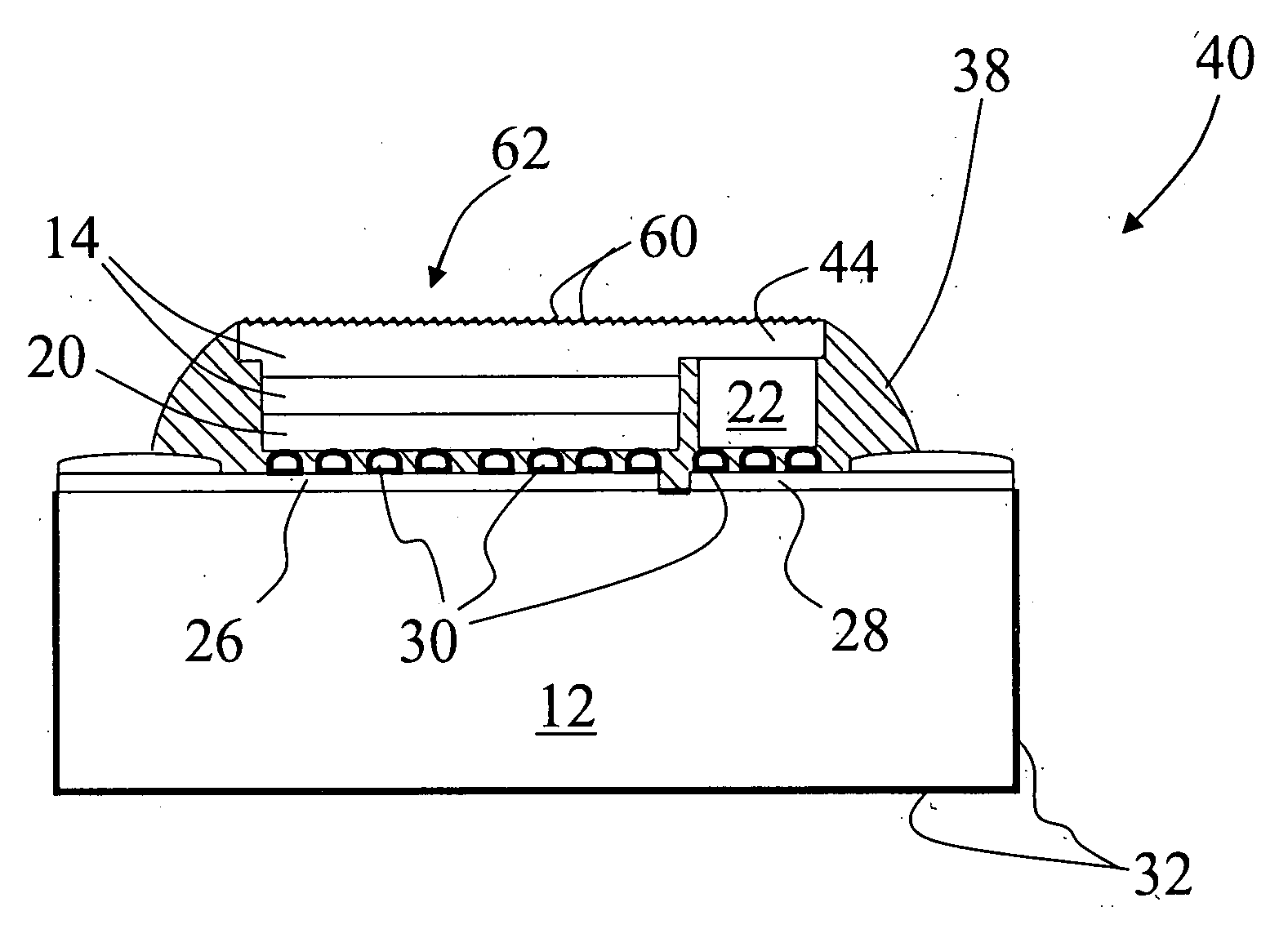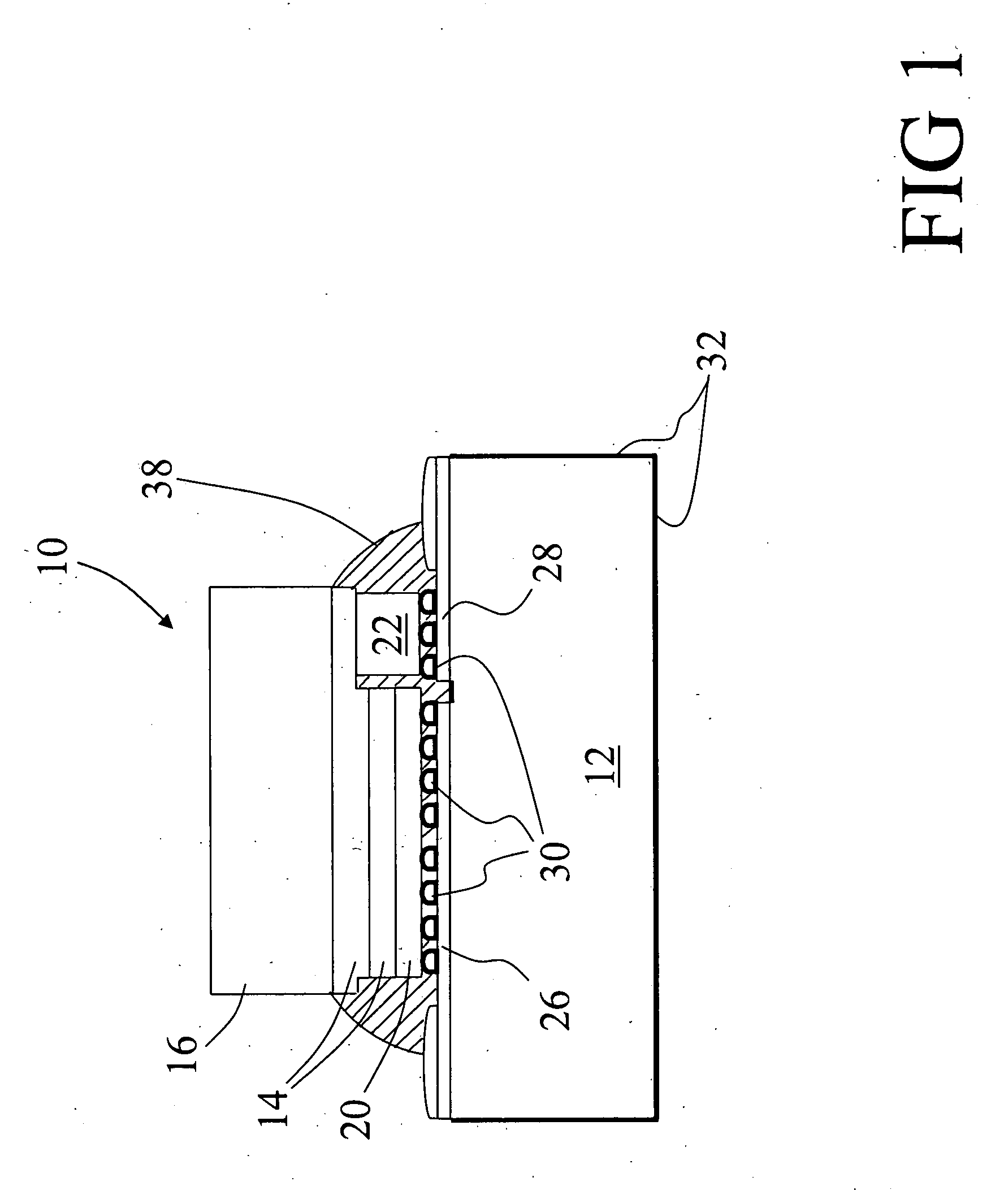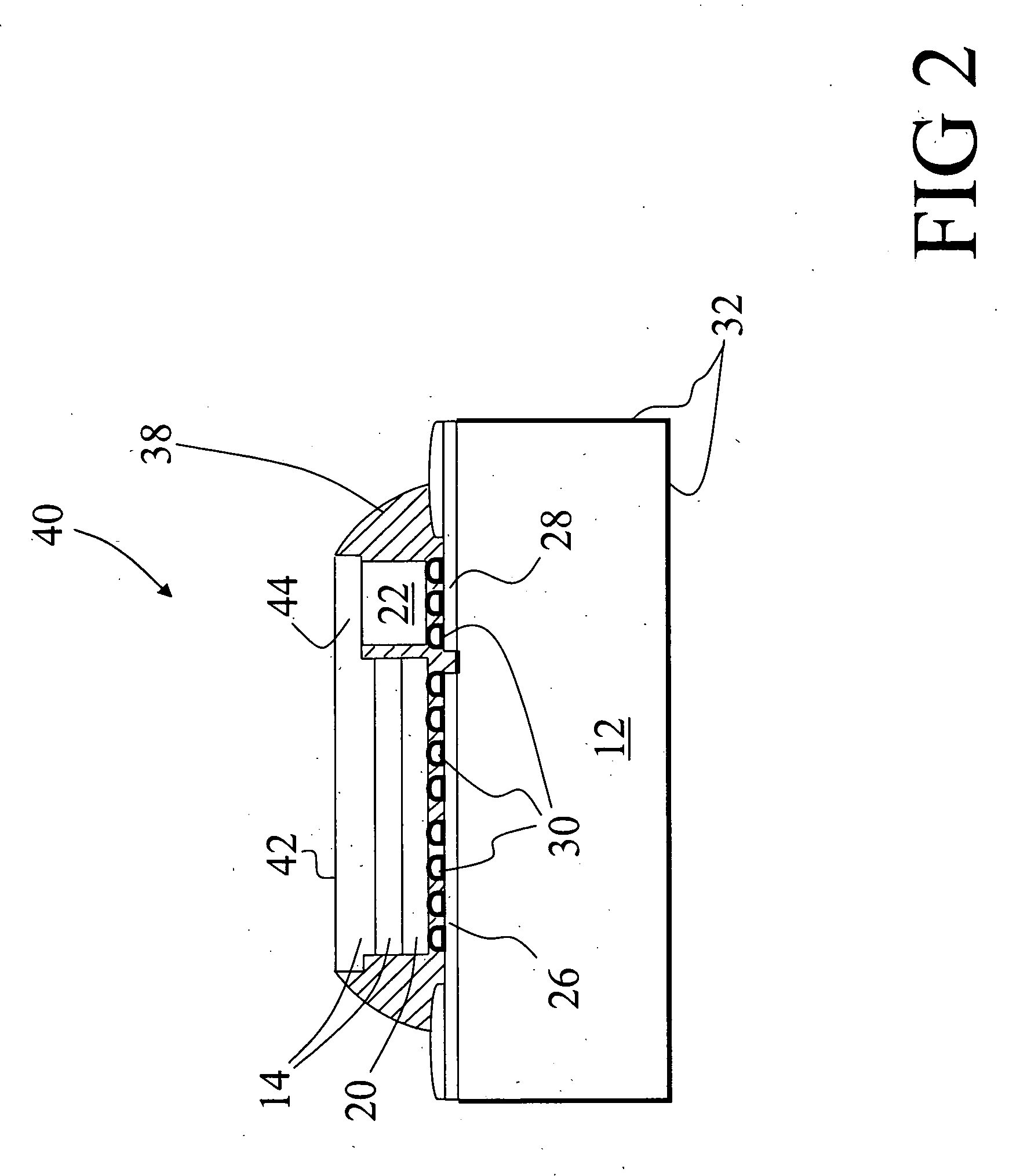Increased light extraction from a nitride LED
- Summary
- Abstract
- Description
- Claims
- Application Information
AI Technical Summary
Benefits of technology
Problems solved by technology
Method used
Image
Examples
Embodiment Construction
[0015] With reference to FIG. 1, a light emitting die 10 is mounted in flip-chip fashion on a mount or submount wafer 12. The die 10 includes a semiconductor device layers stack 14 that is epitaxially deposited on a growth substrate 16. The epitaxial device layers stack 14 can comprise a group III nitride ultraviolet or blue light material, a group III phosphide visible-emission material, or the like.
[0016] The semiconductor layers stack 14 is depicted with two exemplary layers corresponding to a simple p / n diode; however, those skilled in the art will appreciate that more complex semiconductor layer stack can be employed. For a group III nitride ultraviolet or blue light emitting diode with a p-on-n orientation, the layers stack typically includes an epitaxial growth buffer of aluminum nitride or another material, an n-type gallium nitride base layer, an active region of indium gallium nitride, a p-type gallium nitride layer, and optionally a contact layer formed on the p-type gal...
PUM
 Login to View More
Login to View More Abstract
Description
Claims
Application Information
 Login to View More
Login to View More - R&D
- Intellectual Property
- Life Sciences
- Materials
- Tech Scout
- Unparalleled Data Quality
- Higher Quality Content
- 60% Fewer Hallucinations
Browse by: Latest US Patents, China's latest patents, Technical Efficacy Thesaurus, Application Domain, Technology Topic, Popular Technical Reports.
© 2025 PatSnap. All rights reserved.Legal|Privacy policy|Modern Slavery Act Transparency Statement|Sitemap|About US| Contact US: help@patsnap.com



